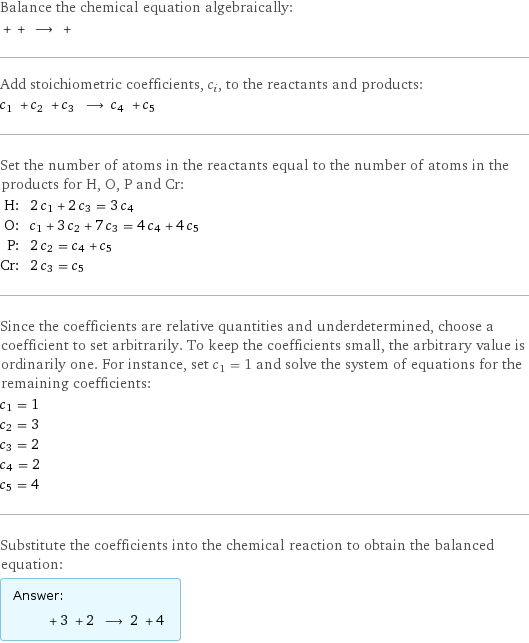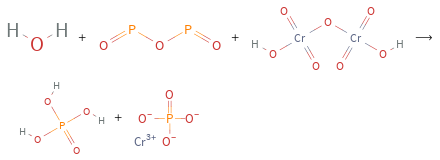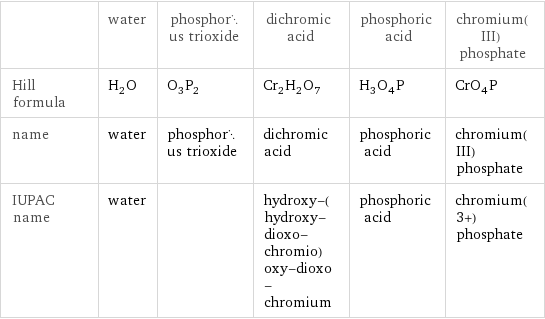Input interpretation

water + phosphorus trioxide + dichromic acid ⟶ phosphoric acid + chromium(III) phosphate
Balanced equation

Balance the chemical equation algebraically: + + ⟶ + Add stoichiometric coefficients, c_i, to the reactants and products: c_1 + c_2 + c_3 ⟶ c_4 + c_5 Set the number of atoms in the reactants equal to the number of atoms in the products for H, O, P and Cr: H: | 2 c_1 + 2 c_3 = 3 c_4 O: | c_1 + 3 c_2 + 7 c_3 = 4 c_4 + 4 c_5 P: | 2 c_2 = c_4 + c_5 Cr: | 2 c_3 = c_5 Since the coefficients are relative quantities and underdetermined, choose a coefficient to set arbitrarily. To keep the coefficients small, the arbitrary value is ordinarily one. For instance, set c_1 = 1 and solve the system of equations for the remaining coefficients: c_1 = 1 c_2 = 3 c_3 = 2 c_4 = 2 c_5 = 4 Substitute the coefficients into the chemical reaction to obtain the balanced equation: Answer: | | + 3 + 2 ⟶ 2 + 4
Structures

+ + ⟶ +
Names

water + phosphorus trioxide + dichromic acid ⟶ phosphoric acid + chromium(III) phosphate
Chemical names and formulas

| water | phosphorus trioxide | dichromic acid | phosphoric acid | chromium(III) phosphate Hill formula | H_2O | O_3P_2 | Cr_2H_2O_7 | H_3O_4P | CrO_4P name | water | phosphorus trioxide | dichromic acid | phosphoric acid | chromium(III) phosphate IUPAC name | water | | hydroxy-(hydroxy-dioxo-chromio)oxy-dioxo-chromium | phosphoric acid | chromium(3+) phosphate